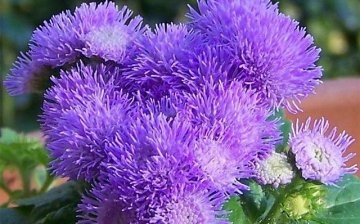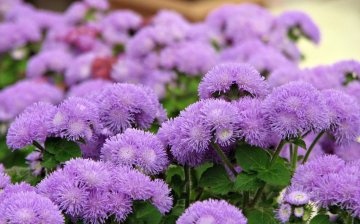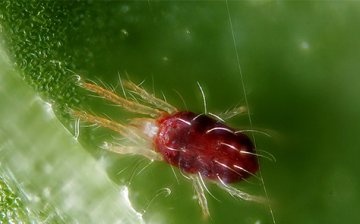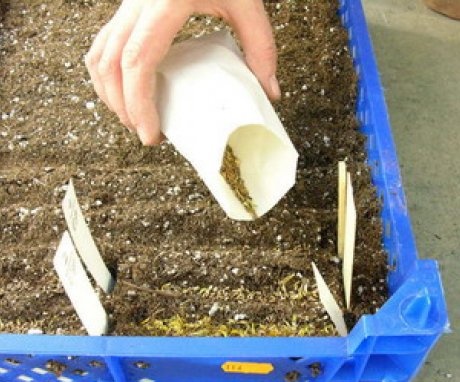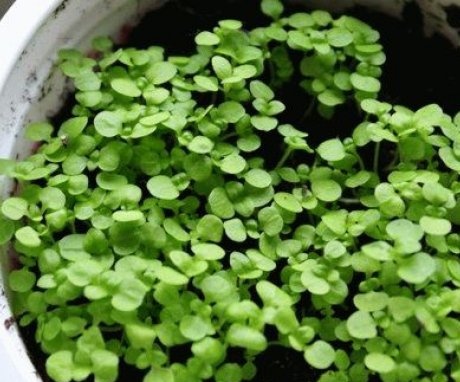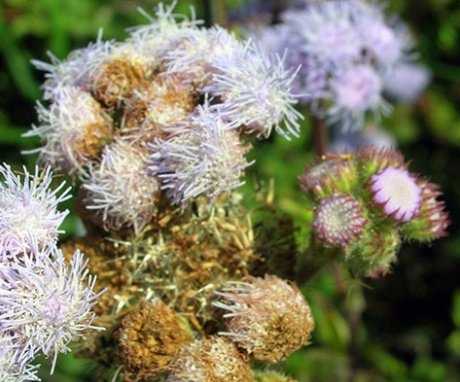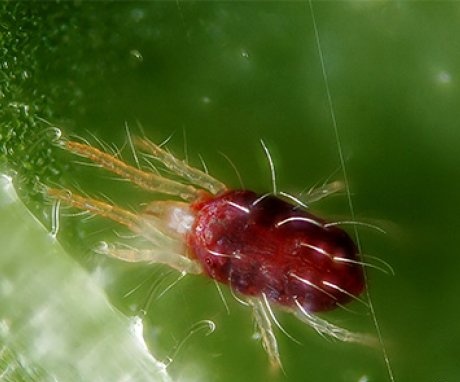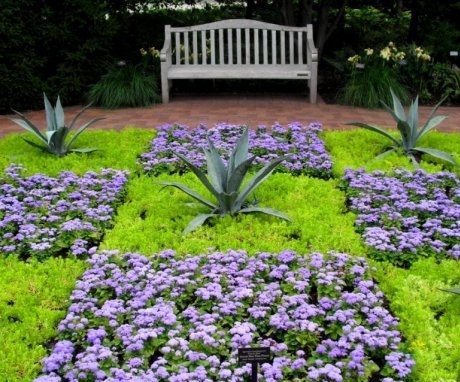Ageratum Mexican - a delicate flower for decorating flower beds and garden
Among those who came to us from the countries of Central and Latin America, an unusual type of Mexican ageratum stands out, which in translation means ageless, and in common parlance its name is longevity. Many gardeners love this beautiful plant with fluffy, basket-like inflorescences and prefer it in their flower beds.
Content:
- Reproduction and planting of flowers
- How to properly care for an ornamental plant
- Ageratum diseases and pests
- Use of the Mexican ageratum in the garden
Features of the appearance of a flower
In its homeland, the Mexican Ageratum belongs to perennials, but in our country it has lost these properties and is ranked among annual flowers. On a small bush, reaching a height of 10 to 60 centimeters, small, ball-forming flowers of different tones stand out from blue and purple to white, pink, even yellow.
The inflorescences are no more than 5 centimeters in diameter, and they are fluffy because the stigmas of the same tone are located next to the perianths. The stem has light green oval or diamond-like leaves with jagged edges. Plants begin to bloom from June to September, but with the first night frosts, they die.
If the flowers have matured, turn brown, then you can collect seeds from them.
On the basis of the Mexican ageratum, breeders have bred such interesting plants:
- The Alba variety is characterized by the white color of compact dense inflorescences.
- Blue mink is appreciated for its unpretentiousness, durability flowering bright blue baskets.
- Dark pink shrubs of ageratum Pink fire are good in any flower bed.
- The North Sea hybrid has interesting inflorescences of a dark purple hue.
Ageratum Mexican has long won the hearts of flower growers, and the development of new varietal variants leads to its further spread.
Reproduction and planting of flowers
The ageratum breeding method is quite simple - seeds... If the seeds were collected independently, then it should be noted that they remain viable for several years.
Planting seeds:
- At the end of the first spring month, it is necessary to prepare boxes with soil consisting of components common for flowers: humus, peat, sand.
- Since ageratum seeds are smaller than a poppy seed, they are laid out on the soil surface, sprinkled with earth or covered with glass.
- Keep the boxes at a temperature not lower than 15 degrees Celsius, opening them daily for ventilation.
- The soil in the containers should be moderately moist. With proper maintenance, flower shoots will appear in 15 days, and then the boxes are opened completely.
The appearance of the first leaves on seedlings is a signal of transplant plants into more spacious capacities... Before planting ageratum in open ground pick produce twice, so that in conclusion, each sprout is in a separate glass or pot.
Every morning should start with glaze sprouts, but they need dry air.In order to gradually prepare the seedlings of an ornamental plant for planting in flower beds, it is necessary to take it out onto the street or balcony. But at the same time, do not forget that the ageratum will die with slight frosts, therefore, temperature control should be constant and the covering material is at hand. You can also work in advance on the formation of the future flower bush by pinching the plant over the fourth leaf.
Some growers keep individual flowers by replanting them in pots at the end of summer and placing them in a cool room with adequate lighting.
Minimum moisture in winter, increased watering and feeding in the spring they will help to prepare for cutting by the bushes cuttings and then rooting them. But this method of reproduction of the Mexican ageratum will lead to the cultivation of plants of the same type and undersized.
As soon as real warm days come without nighttime drops in temperature, ageratum can be planted in prepared places. Permanent flowering Plants promote open, sunny places without the slightest shade. Lack of sunlight leads to the elongation of young shoots of the flower. The soil must be chosen for it light, airy, which does not retain moisture for a long time. Soils that are too nutritious will enhance the green mass of the plant, but will not increase flowering. With diligent care of the seedlings and proper planting of the ageratum, the flower will begin to serve as a garden decoration pretty soon, at the beginning of summer.
How to properly care for an ornamental plant
Special care for the Mexican alien is not required, but some rules must be followed:
- It is necessary to water the ageratum bushes often, but not abundantly, because he does not like stagnant water in the soil. In dry and hot summer, the flower is able to survive for a long time without water due to the branched structure of the root.
- Frequent weeding and loosening of the soil to Ageratum Mexican is especially beneficial.
- For feeding, use complex fertilizers for flowering plants that are applied several times per season. But the most appropriate feeding is considered before the plant begins to bloom, as well as after pruning.
- Transplant the plant tolerates quite well, even in flowering form.
- Cutting the shrubs of ageratum is not only possible, but also necessary in order to create the shape of the plant that is consistent with the taste of the designer. As soon as the inflorescences stop blooming, they also need to be cut.
If you wish, you can create winter bouquets from a flower. To do this, cut flowers that have not yet fully blossomed, tie them into small bouquets and hang them to dry in a well-ventilated room with inflorescences down. Summer bouquets with ageratum also last a long time, blue fluffy balls, just blossomed, with zinnias and calendula.
Ageratum diseases and pests
This type of ageratum is not resistant to diseases:
- Root rot arising from infection with a fungus affects many plants. Another name for the disease is black leg. It occurs during waterlogging of the soil, insufficient sunlight, low air temperatures. The main symptoms of the disease include rotting of the lower part of the stem, near the root. Then the stem breaks down, and the plant dies due to the fact that the upper part of the flower does not feed. Sick plants must be carefully dug up and destroyed together with a lump of earth, and the rest of the plantings must be watered and spray solution of potassium permanganate once a week.
- The cucumber mosaic virus often affects the bushes of the Mexican ageratum. On the leaves, spots of dark and light colors of various shapes are formed. In this case, the leaves are bent, and the plant does not develop, does not bloom. In order to avoid contracting this viral disease, it is necessary to carefully remove weeds near flowers, because they carry the virus. Fight against aphids also brings positive results in disease prevention. Spraying fungicides will bring immediate results, but will not get rid of the problem. Therefore, it is better to destroy diseased bushes, and disinfect healthy plantings.
- Ageratum often undergoes bacterial wilting caused by leaf chlorosis. By removing the damaged parts of the plant and treating them with insecticidal preparations, further destruction of the flower components can be avoided. Spraying with infusion often helps with such diseases wormwood, bird cherry or tansy.
The pests of the Mexican ageratum are even more:
- The spider mite fell in love with the fragrant leaves of the long-flowered, populating them with whole colonies and sucking out vital juices. The leaves begin to turn yellow, entangled in thin cobwebs. The female pest lays eggs, which must be destroyed. By removing old leaves and faded parts, arranging a shower for plants during dry summers, you can reduce the number of pests. It's good in calm weather spray ageratum bushes affected by the pest with both chemical and biological insecticides. If there are few such plants, then washing the flowers with water with the addition of detergent will bring the effect.
- The miniature whitefly insect is another enemy of the ageratum, the larvae, eggs and adults of which are chosen by the leaves of the plant. Small butterflies appear when the plantings are thickened, at hot air temperatures and high humidity. The fight against the pest is carried out in several stages with drugs such as Actellik, Confidor. Having processed the plant and the soil around it, it is advisable to wrap the flower to create a special medical greenhouse so that the whitefly dies completely. Many gardeners use infusion garliccooked for a week to spray diseased plants.
- Filamentous, transparent, worms about a millimeter long, nematodes, infect the roots and leaves of the Mexican ageratum. These pests are highly fertile and deplete plant tissues, passing through their entire life cycle. The activity of nematodes gradually leads to the death of the flower. It is difficult to get rid of the pest, only you can reduce its number with the help of Fitoverma. Therefore, the only correct solution would be to destroy the infected ageratum bushes. And then the soil must be thoroughly disinfected.
Any deviation from the norm in the development of ageratum is the result of either improper care, or the creation of poor conditions for growth.
Use of the Mexican ageratum in the garden
Ageratum Mexican is irreplaceable in garden design. Here are some tips for using it:
- Registration curbs, flower bed, rabatok, alpine slides using ageratum - all this is actively used in landscape design. Tall flower bushes are grown to decorate bouquets, and undersized ones - to decorate decorative borders. Better not to come up with - on the blue background of the ageratum gold, orange, red-yellow marigold, zinnias or other annuals, and from perennials they stand out effectively on the blue field of ageratum helenium, rudbeckia, heliopsis.
- Planting plants in groups on green lawn together with other annuals of bright yellow or orange tones, it will perfectly refresh this area in the garden.
- Flower beds with perennial plants often have empty spaces between plantings, which will be beautifully filled with blue or another shade of Mexican ageratum.
- Tall flower species planted in pots look great between the bushes of the autumn garden.
- Growing in flowerpots near gazebos and porches petunias against the background of the ageratum - an interesting decorative solution.
- Container planting of plants on the balconies will make this part of the house a magnificent flower garden.
The versatility of the flower contributes to its use in different compositions, bold combinations and shapes.For designers, this is the most favorite attribute in the implementation of the most intricate decorative solutions.
More information can be found in the video:




